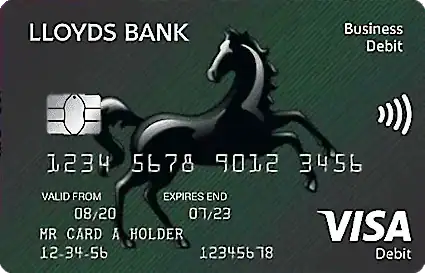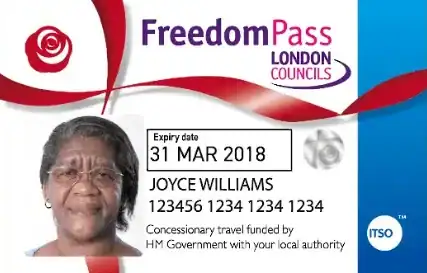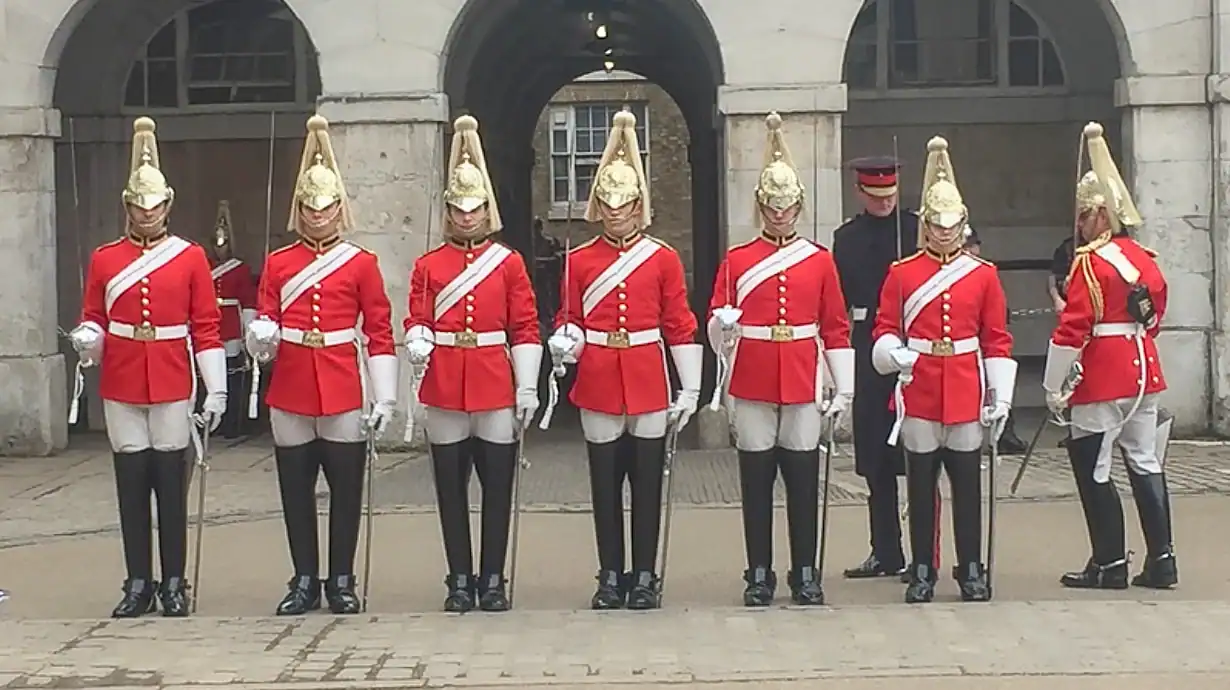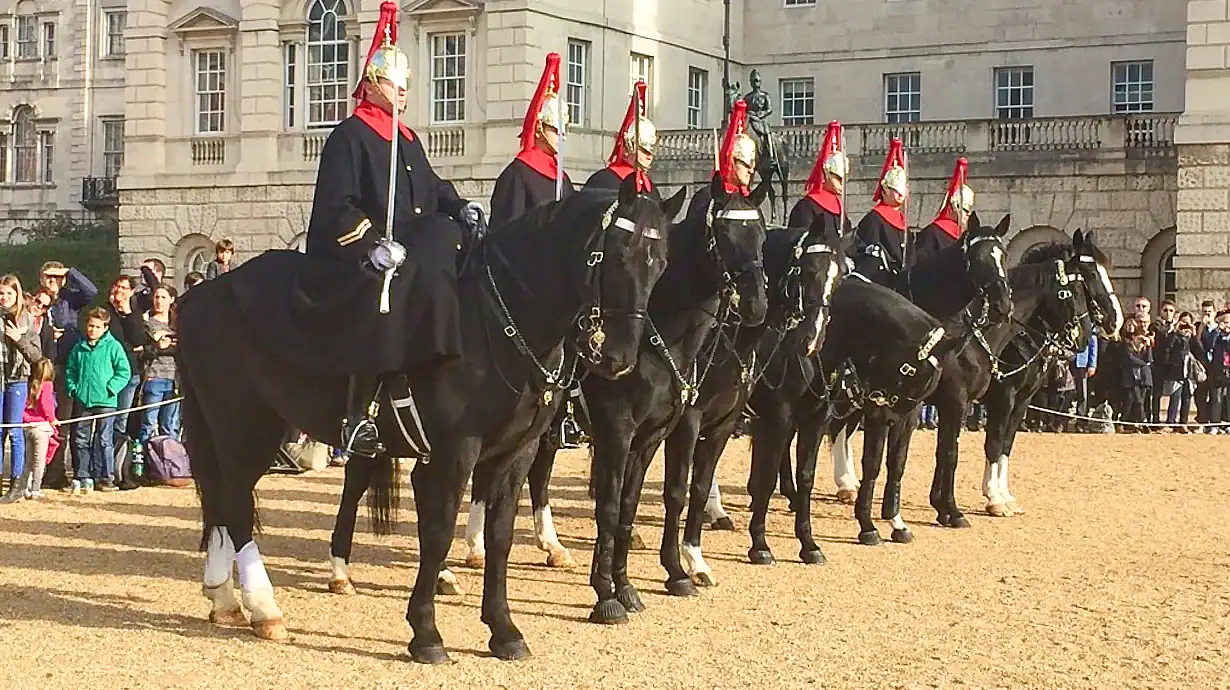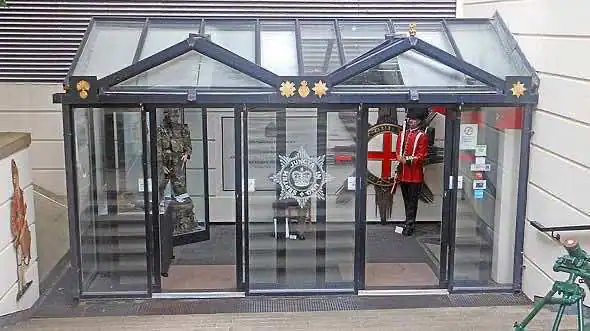
While I’m standing here waiting for the Guards’ Museum to open a little old lady has walked up with a load of tatty plastic bags and piled them onto a bench, doing all the animated facial expressions and associated arm actions that come with being mad. I haven’t got the faintest idea what she’s babbling on about but she seems happy enough. She actually seems happier than me. I’m just going to do what English people do best and pretend she’s not there. I will stare at the buses. I will stare at the clouds. I will live in my imaginary world, and she can live in hers.
 Photo: londondrum.com
Photo: londondrum.comI quite like this little museum. It’s situated next-door to Wellington Barracks and when you walk in the front door there’s always a proud old bloke behind the desk (probably an old soldier) and a couple of dads taking their kids around the rooms (probably Foot Guards on their day off, showing their kids what they do for a living).
 Photo: londondrum.com
Photo: londondrum.comIt begins with a little movie telling you a quick history of the regiments – the same ones you see standing outside Buckingham Palace and Horse Guards every day.
The Foot Guards’ five regiments
Coldstream Guards – The oldest of the five regiments dates back to the English Civil War after Parliament captured Colonel Monck. Cromwell had to lock him in the Tower for two years before he agreed to switch sides, but following Cromwell’s death Monck made amends with the monarchy by marching his soldiers down to London to help put Charles II on the throne.
 Photo: londondrum.com
Photo: londondrum.comScots Guards – The second oldest regiment was formed by Charles I to help restore order in Ireland. With the English Civil War still raging he couldn’t ask Parliament to supply any soldiers so he got them from Scotland instead. The regiment was disbanded soon after but Charles II reformed it in 1661 by which time they had to settle for the title of ‘3rd Regiment’ behind the Grenadiers and Coldstream Guards.
Grenadier Guards – The Grenadiers started out as Charles II’s personal bodyguard while he was still exiled in Bruges. Upon his triumphant return to England he rewarded them with the title of ’1st Regiment’. This didn’t go down well with the Coldstream Guards who were older than the Grenadiers (and helped restore him to the throne!) which is why they adopted their defiant motto “Nulli Secundus” – Second to None.
Irish & Welsh Guards – Queen Victoria formed the Irish after their victories in the Boer War and the Welsh came fifteen years later under George V.
 Photo: londondrum.com
Photo: londondrum.comThe Foot Guards’ military history
The Foot Guards have fought in just about every British war from the 1640s up to Afghanistan and the museum has everything from their pikes, muskets, guns and swords, to their military medals, bearskins and regimental drums. It’s particularly strong on the English Civil War with lots of calligraphic papers and old oil paintings of the main characters.
There are more display cases about the Battle of Blenheim and War of Spanish Succession (1700-1714), the War of Austrian Succession (1740-1748), the Seven Years War (1756-1763) and the War of American Independence (1775-1783), but the real meat and potatoes of the museum is the long war against France (1793-1815).
The Battle of Waterloo
 Photo: londondrum.com
Photo: londondrum.comWellington sent four companies into the walled compound of Hougoumont and they spent the whole day fighting off the French. When the smoke cleared Wellington pinned the success of the battle on the closing of the gates, and you can see that same lock and chain in here.
They’ve also got Wellington’s red jacket, a lock of tail hair from his horse, and a couple of concrete gateposts from the place where Napoleon slept the night before the battle.
 Photo: londondrum.com
Photo: londondrum.comCrimean War, Boer War, World Wars I & II
It’s only a little museum but the cabinets are absolutely stuffed full to overflowing all the way around, and if you take the time to read the placards then you keep coming across surprising finds like the Grand Old Duke of York’s bearskin hat (the same guy who ’rode his men to the top of the hill, then rode them down again’), and a candlestick holder once carried by Florence Nightingale on her night-time rounds.
 Photo: londondrum.com
Photo: londondrum.comThere’s also plenty of personal items like the soldiers’ pots and pans, cups and mugs, cleaning kits and playing cards.
Whether you enjoy it all is going to depend entirely on how much you’re into British military history. I think it will probably appeal to old soldiers and middle-aged blokes the most. There’s not a lot for kids.
The Guards’ Chapel
 Photo: londondrum.com
Photo: londondrum.comWhen you’re finished inside the museum it’s worth having a quick look at the Guards’ Chapel outside. Don’t be put off by the rather stark exterior because the inside is much more like a church. This is the religious home of the Household Division and their congregation is made up of veterans and serving soldiers from the barracks next-door.
 Photo: londondrum.com
Photo: londondrum.comThe original exterior was destroyed when a flying bomb demolished the west end in World War II and the only part to survive was the old apse along with six silver candles that were still burning as they cleared away the rubble. They’ve kept those same candlesticks burning ever since like a never-ending flame, and created a new stained glass window from all the smashed and shattered pieces they picked up off the floor.
I also recommend… If you enjoy this then try Household Cavalry Museum (walk it in 12 mins or travel from St James’s Park to Westminster by tube); National Army Museum (walk it in 28 mins or travel from St James’s Park to Sloane Square via tube) and Wellington Barracks (you can walk there in less than 1 min). If you want to see the Foot Guards in action the try the Changing of the Guard ceremony at Buckingham Palace. You can see the Household Cavalry standing guard at the horse boxes in Whitehall
How to get to the Guards’ Museum
| Fare zone | Cash | Oyster & Contactless | Travelcard | ||||
|---|---|---|---|---|---|---|---|
| Single fare | Single fare | Daily cap | One day | ||||
| Peak | Off-peak | Peak | Off-peak | Anytime | Off-peak | ||
| Bus (all zones) | n/a | £1.75 | £5.25 | £6 | |||
| Train (zone 1) | £7 | £2.90 | £2.80 | £8.90 | £8.90 | £16.60(zone 1-4) | £16.60(zone 1-6) |
| Train (zone 1-2) | £7 | £3.50 | £2.90 | £8.90 | £8.90 | ||
| Train (zone 1-3) | £7 | £3.80 | £3.10 | £10.50 | £10.50 | ||
| Train (zone 1-4) | £7 | £4.60 | £3.40 | £12.80 | £12.80 | ||
| Train (zone 1-5) | £7 | £5.20 | £3.60 | £15.30 | £15.30 | £23.60(zone 1-6) | |
| Train (zone 1-6) | £7 | £5.80* | £3.80* | £16.30 | £16.30 | ||
| * Journeys between zone 1 and Heathrow are always charged at the peak rate. Prices are correct as of | |||||||
More things to do in Westminster



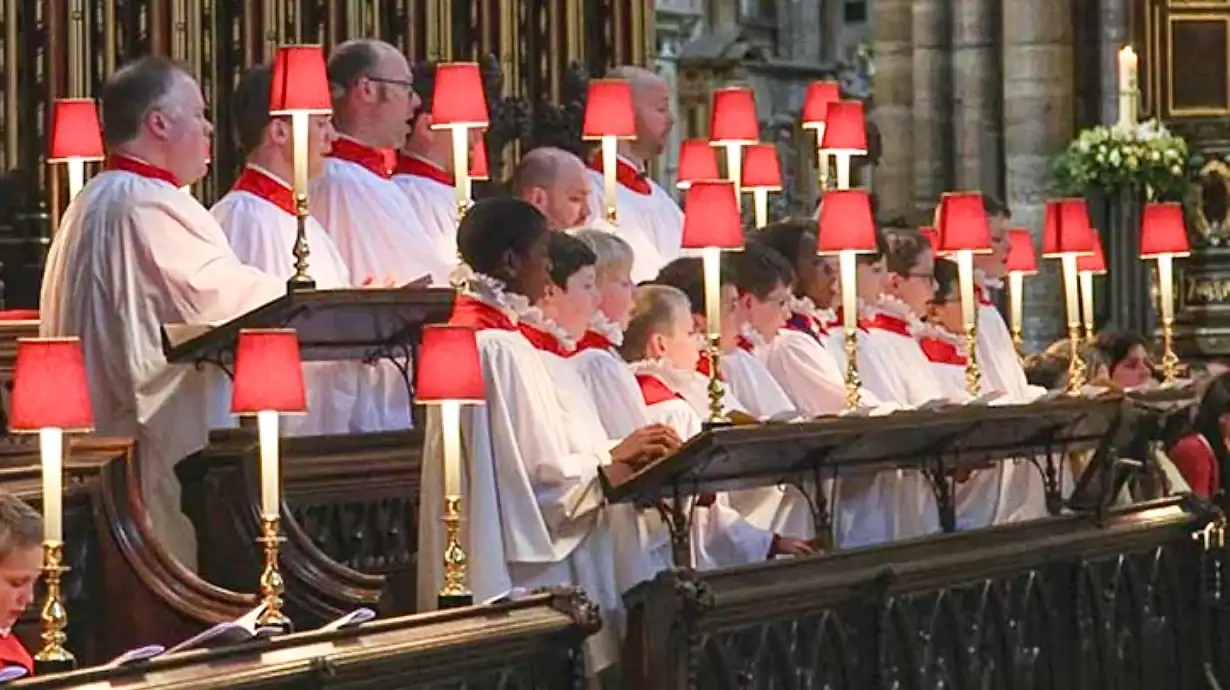
 Twitter
Twitter Facebook
Facebook Bluesky
Bluesky WhatsApp
WhatsApp Email
Email



